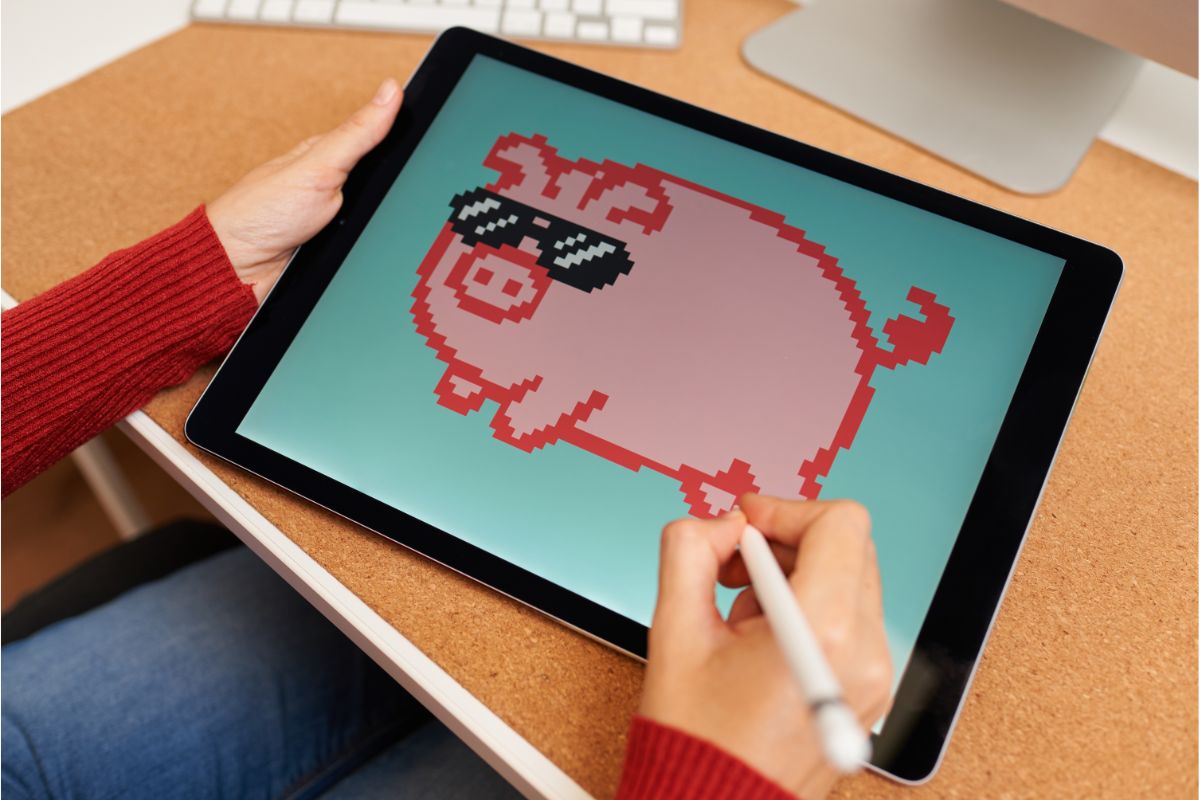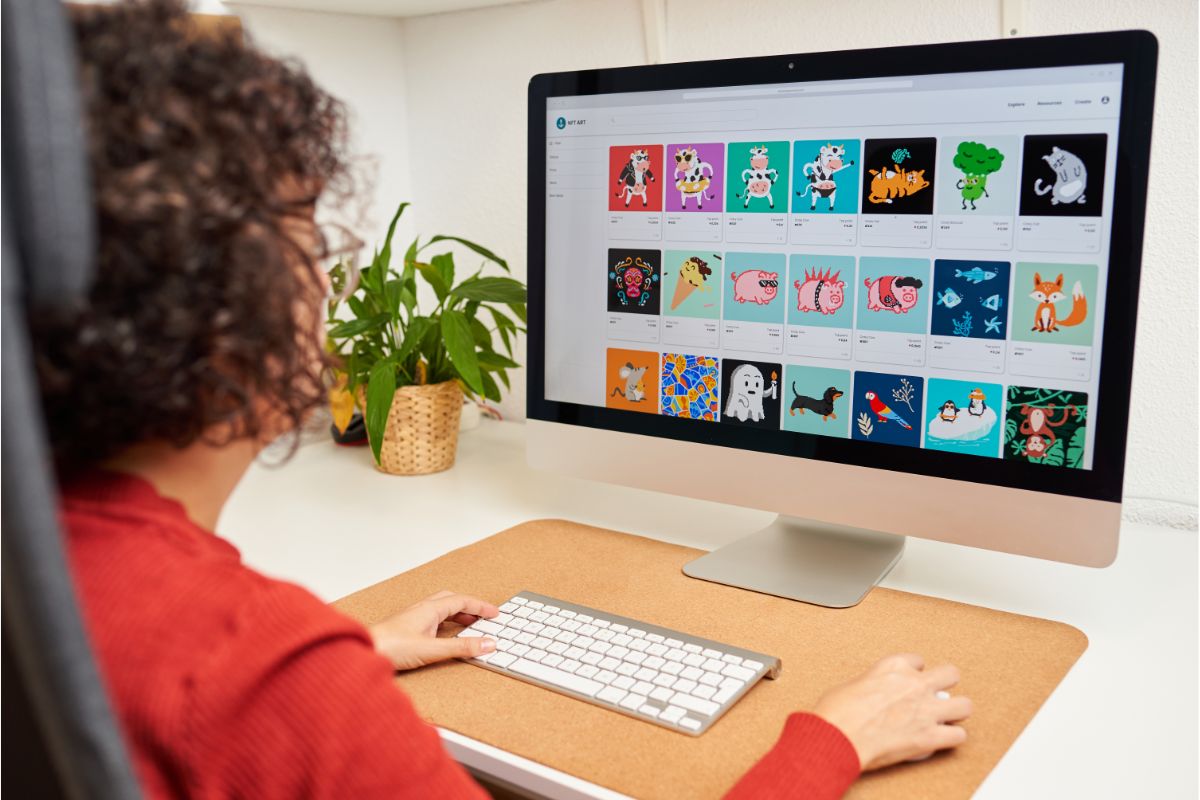NFTs have very quickly become a promising option for people looking to display their artistry as well as make money doing it, by becoming an outlet for creators of all forms.

More and more artists are developing and investing in NFTs, so now is the perfect time to begin your journey into creating and developing NFTs.
Creating and making NFTs can seem like an incredibly difficult task, and whilst there are some guides out there to get you started, it can still be daunting.
Additionally, the jargon used can be overwhelming if you’re not overly familiar with the technology, to begin with.
Picking a blockchain can be difficult too, with some more advanced blockchain technology being too complicated for newcomers.
Thankfully, Opeansea makes for a great first platform for you to use, and with its cross-blockchain capabilities, it is also easy to understand for newcomers too!
This guide will aim to help you set up and mint your own NFT collection using Opensea, whilst also aiming to help clear up any confusion and explain any jargon.
1. Setting Up Your Wallet
The first step necessary to minting an NFT is to make sure that you have an appropriate Ethereum wallet set up, this is so you can store your NFT assets, as well as any cryptocurrency you receive in payment.
Opensea allows a wide variety of choices of wallets, so as long as you make sure that the one you set up is reliable as well as compatible, you should be good to go.
2. Connecting Your Wallet
Once your wallet is set up and ready for use, the next step is to connect your wallet to your Opensea account.
To do this, go to the homepage, and click on the wallet in the top-right hand corner, this will allow you to pick one of the wallet options to connect, so pick your wallet, and accept the terms and conditions in order to finish connecting your wallet.
3. Create Your Collection
With your wallet now connected, now is the time for you to begin creating and minting your NFTs! You can choose how you publish them, either individually or as a collection.
However, the general recommendation is that collections tend to garner more attention and sales.
Firstly, navigate your way to your Opeansea profile and click “My Collection”, then select “Create” in order to get started on creating your first collection.
Be sure to add a logo, a featured image, as well as a banner image that will help draw attention to your collection.
Next it’s time to name your collection, write a small description for your collection, as well as picking the category that they will be published into.
Then, decide your re-sale fee that you will receive when your NFTs sell, and pick which blockhain they will be published on, as well as your accepted payment methods. Ethereum is usually a safebet for both of these.
4. Time To Mint

With your collection now set up, you can now begin to mint your NFTs, simply open the collection that you just created, click add an item, upload your NFT and name it, fill in its attributes, and once you’ve finished, click create!
The first time you mint an NFT, Opensea will require you to pay a one-time initialization fee, and you will also need to grant Opeansea permission to access your NFTs. You will then need to provide a digital signature it will then be published.
It is important to note that because of Opensea’s “Lazy Minting”, your NFTs will only be on the blockchain and other marketplaces after the first sale!
5. Finished!
That’s all there is to it! Minting NFTs via Opensea is incredibly easy in comparison to other platforms, and once your NFTs are minted you’ll be able to view them on the marketplace available for purchase.
Connect your collection to other collections, add even more NFTs, and perhaps even make use of your NFTs in the Metaverse (see also ‘How Do I Invest In the Metaverse?‘).
Opensea makes it even easier for even the least tech-savvy to begin to delve into the world of NFTs. Furthermore, NFTs don’t just come in the form of artwork, NFTs can come in the form of memes, GIFs, Music, Videos, and even tweets can become NFTs!
Looking toward the future, NFTs could very well change the way in which we buy and collect different things and revolutionize the way in which creators such as artists and musicians get paid.
So learning how to create and mint your own NFTs is a handy skill to have.
Frequently Asked Questions
This section will aim to help any confusion held over certain terms and answer some of the most frequently asked questions surrounding NFTs!
What Is The Blockchain?
The Blockchain is a system that records information that is hard to change, cheat or hack. What the Blockchain does is keep a track of transactions made, which are then distributed and duplicated across the system of computers on the blockchain.
What Does It Mean To Mint An NFT?
Minting an NFT (see also ‘What Does Mint Mean In NFT?‘) simply means uniquely publishing it to the Blockchain in order to make it purchasable, which will then get stored in the decentralized database.
Are NFTs Cryptocurrency?
Whilst NFTs aren’t a form of cryptocurrency, they do share some similar qualities in terms of technology.
For example, both NFTs and Cryptocurrencies exist on a blockchain which helps to verify their unique identities and their ownership. The blockchains also keep a track of the transactions made for both cryptocurrency and NFTs too.
Can I Profit From NFTs?
At the moment, it is completely possible for you to utilize NFTs as a tool for investment, as you can resell the NFTs on the marketplace from which you bought them from.
Some NFT marketplaces even let creators gain royalties as their NFTs get sold from person to person.
- Dividend Growth Investing for Millennials - February 27, 2025
- The Ultimate Guide to Investing in Precious Metals Today - December 6, 2024
- Essential Cryptocurrency Trends: What You Need to Know - December 6, 2024

